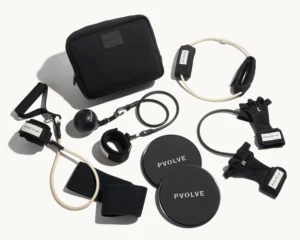
This story is brought to you in partnership with our sponsor, BetterHelp
We All know what it’s like to be in love with someone who keeps you at arm’s length. You try to get close, and just when you think you’re breaking through, they shut down. Conversations about feelings turn into awkward silence. Vulnerability feels one-sided. And before you know it, you’re questioning whether you’re asking for too much—or if you’re just not enough. In times like these, relationship therapy can offer much-needed help, providing guidance on how to navigate emotional barriers and build a stronger connection.
To better understand this dynamic, we spoke with Haesue Jo, MA, a Licensed Marriage and Family Therapist and Head of Clinical Operations at BetterHelp, about dismissive avoidant attachment—a pattern of emotional distancing rooted in a deep-seated need for independence and self-protection. If you’ve found yourself in this situation, BetterHelp is just a click away, offering support and guidance through relationship therapy when navigating these challenges feels overwhelming. (read our previous story on Betterhelp)
For me,relationship therapy was a turning point. It helped me step out of the cycle of trying to “fix” the relationship and instead focus on understanding both my own needs and the reality of what my partner was capable of giving. Whether you’re in a relationship with someone who struggles with emotional intimacy or you recognize avoidant patterns in yourself, awareness is the first step toward change.
Expert Insights: A Conversation with Haesue Jo, MA, Licensed Marriage and Family Therapist
Can you explain what it means to have a dismissive avoidant attachment style, and how it typically manifests in relationships?
It’s all about distance. People with a dismissive avoidant attachment style often prioritize independence and self-sufficiency above all else. It’s not that they don’t want connection—they just have this internal narrative that needing someone or relying on them is a risk or a weakness. In relationships, this can show up as emotional unavailability, reluctance to open up, or avoiding deeper conversations about feelings. They might seem too cool to get close, even aloof, but underneath that is usually a fear of being vulnerable or hurt. Relationship therapy can be a valuable resource to help individuals recognize these patterns and work towards healthier, more fulfilling connections.
What are the key traits or behaviors that define someone with a dismissive avoidant attachment style?
Think of someone who keeps you at arm’s length—not too far that you’re gone, but not too close that they feel exposed. They often downplay emotions, avoid conflict, and sidestep anything that feels too “heavy” emotionally. You might notice them dismissing the need for deeper talks or brushing off compliments. Their default is to focus on logic over feelings and self-reliance over partnership. They’re not being cold on purpose—it’s just their way of protecting themselves.
How does a dismissive avoidant partner typically respond to emotional intimacy or vulnerability in a relationship?
Picture a turtle pulling into its shell. When emotional intimacy or vulnerability comes up, a dismissive avoidant partner might shut down, change the subject, or physically withdraw – in other words, pull into their shell. They might even act like everything is fine when it clearly isn’t. This isn’t because they don’t care—it’s because closeness feels overwhelming or unsafe. Vulnerability, to them, can feel like handing over control, and they’ll instinctively guard against it.
What are some signs that the push-pull dynamic is becoming unhealthy or unsustainable for someone in the relationship?
When you’re constantly walking on eggshells, that’s a big red flag. If you find yourself chasing for reassurance, feeling like you’re giving more than you’re getting, or questioning your own worth because they keep pulling away, that’s when it’s crossing into unhealthy territory. The push-pull dynamic can also drain your energy, leaving you feeling confused, rejected, and exhausted. At some point, the cycle isn’t just about their avoidance—it’s about how much you’re sacrificing to stay in it.
 Why do dismissive avoidant partners often seem resistant to commitment or deeper emotional investment?
Why do dismissive avoidant partners often seem resistant to commitment or deeper emotional investment?
It comes back to fear and control. Commitment feels like a loss of independence, and deeper emotional investment means risking vulnerability. For someone with a dismissive avoidant style, those risks are terrifying. They might view closeness as suffocating, or believe that depending on someone else could lead to being let down. In their mind, it’s safer to keep their guard up and maintain a sense of emotional autonomy.
Why is it often difficult for people to walk away from a dismissive avoidant partner despite the challenges?
Because there’s often hope. Hope that things will change, that they’ll open up, that the love you’re giving will finally get through. It’s easy to get caught in the cycle of seeing glimpses of their care or connection and holding onto those moments, even if they’re rare. Plus, there’s something magnetic about their mystery—it’s like you’re trying to solve a puzzle that never quite fits together. Letting go feels like giving up on the possibility that they might finally let you in.
What are some practical strategies for breaking free from the emotional cycle and setting boundaries with a dismissive avoidant partner?
First, get clear on your own needs. Are you asking for things they genuinely can’t give? Then, set boundaries that protect your emotional well-being—whether that’s limiting how much you overextend or deciding how much distance feels healthy. Communication matters, but so does accepting what they’re showing you, not what you hope they’ll be. Let yourself grieve the idea of the relationship you wanted, and focus on what you can control: your own peace, priorities, and self-respect.
How can therapy or professional support help someone gain clarity and move forward when dealing with this type of relationship?
Therapy is like holding up a mirror to your patterns. It helps you unpack why you’re drawn to this dynamic, what it’s triggering in you, and how to build healthier relationships moving forward. A therapist can guide you through the messy emotions, help you set realistic expectations, and give you tools to process the attachment wounds—yours and theirs. Sometimes, you just need a safe space to untangle the push-pull cycle and find your way back to yourself.
Navigating Relationships with Support
Navigating a relationship with a dismissive avoidant partner—or recognizing these patterns in yourself—can be emotionally exhausting, but understanding is the first step toward change. Whether you’re working through the complexities of emotional distance, setting healthier boundaries, or simply trying to make sense of your own needs, therapy can provide the clarity and tools to move forward.
Why BetterHelp Works for Busy Lives
As a fully online platform, BetterHelp makes it easy to connect with a licensed therapist on your schedule, whether you prefer messaging, phone calls, or video sessions. For busy individuals juggling work, life, and relationships, the flexibility of online therapy means getting the support you need without the added stress of commuting or long wait times. If you’re ready to break free from the cycle of uncertainty and gain a deeper understanding of yourself and your relationships, BetterHelp is just a click away.
All material on The Chalkboard Mag is provided for educational purposes only. Always seek the advice of your physician or other qualified healthcare provider for any questions you have regarding a medical condition, and before undertaking any diet, exercise or other health-related programs. This story is brought to you in partnership with BetterHelp. From time to time, TCM editors choose to partner with brands we believe in to bring our readers special offers














